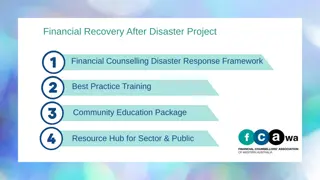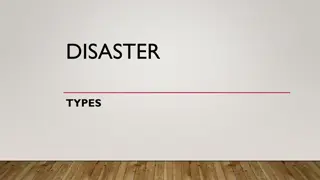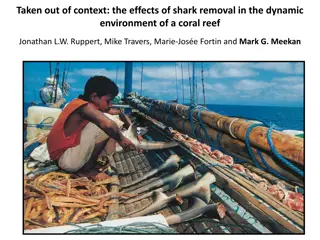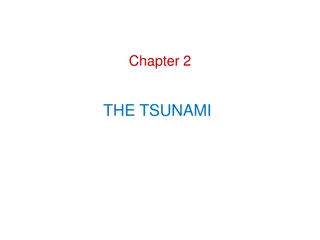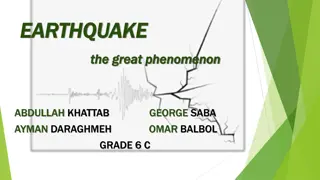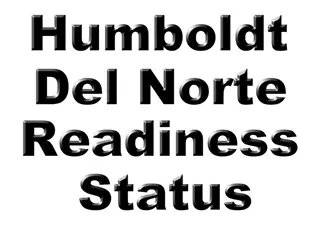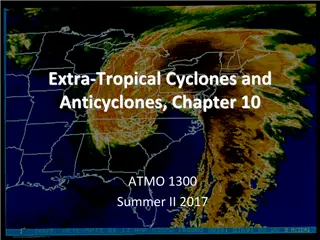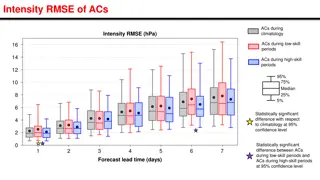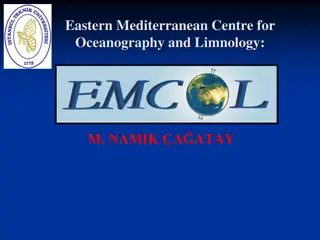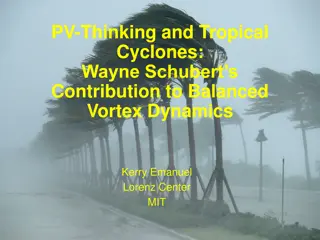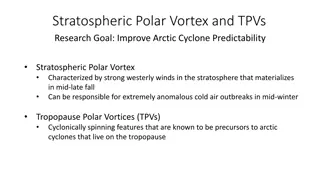Understanding Cyclones and Tsunamis: Causes, Effects, and Management
Cyclones and tsunamis are natural disasters that can have devastating effects such as strong winds, heavy rains, floods, and destruction. Cyclones are violent storms with high-speed winds rotating around a calm center of low pressure, while tsunamis are seismic sea waves caused by earthquakes or undersea landslides. This content covers the causes, effects, and management strategies for dealing with these catastrophic events, including identifying prone areas, developing green belts, and alert systems.
Download Presentation

Please find below an Image/Link to download the presentation.
The content on the website is provided AS IS for your information and personal use only. It may not be sold, licensed, or shared on other websites without obtaining consent from the author. Download presentation by click this link. If you encounter any issues during the download, it is possible that the publisher has removed the file from their server.
E N D
Presentation Transcript
Cyclones Cyclones are violent storms characterized by strong and high speed winds rotating about a calm center of low atmospheric pressure with wind velocity 50-250 km/hour cyclones are followed by heavy rains causing floods and destruction.
CYCLONES AND TSUNAMIES CAUSES AND MANAGEMENT
Effects Effects 1. Light weight structure, old buildings, weak structures are at risk. 2. Settlements are vulnerable to floods, mudslides, landslides due to heavy rain. 3. Telephone and electricity poles, wires, light buildings structures such as thatched, tin, shed roof , sign boards, fishing boats, trees are most vulnerable to cyclone damages. 4. Due to heavy rains people, animals and their property may be washed away by floods or blown away by cyclone itself. 5. Cyclones along the coastal areas may cause sea water to enter inland and floods it. This may cause saline water contamination of soil & water in the affected area affecting severely water supply and affecting agriculture crops. Management Management 1. Identify Cyclone prone areas 2. Green belts should be developed along the coastal areas.
Tsunami Tsunami It is called seismic sea wave, catastrophic ocean wave caused by earthquake occurring with a magnitude greater than 6.5 on Richter scale. Under sea landslides/ volcanic eruptions may also cause tsunami.
Tsunami a train of simple progressive oscillatory waves in propagated to great distances in ever widening circle as the wave up to height 50 m land above are seen. Effects Effects 1. Hugh water of sea enters causing floods washing away every thing 2. The famous tsunami of 2004 had devastating effects on coastal areas of India, Malaysia, Indonesia,Srilanka killing more than 2lac people in Asian countries other effects are same as caused by cyclones/ floods mitigation are same to those of floods. Management Management Alert by warning system and movement of animals
THANK YOU


